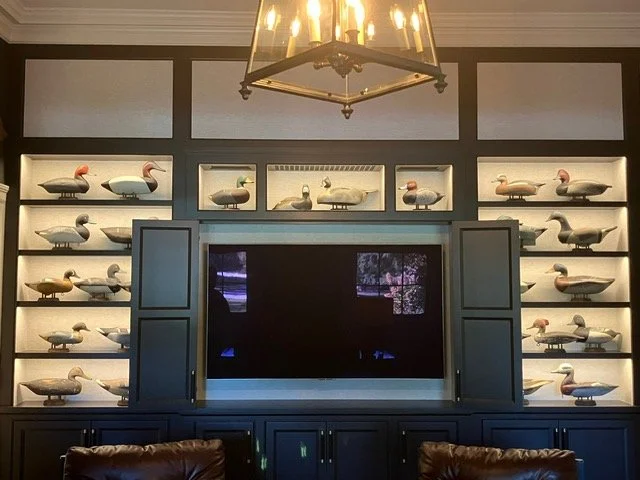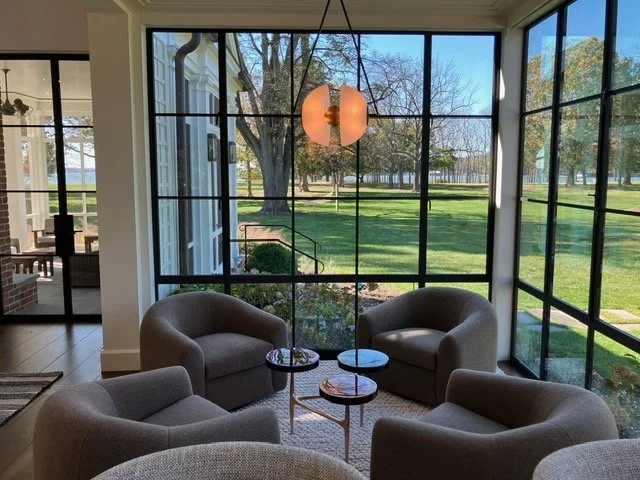Why Clint’s Chose Lighting Control
Brief:
After conversing with architects, I have noticed a pattern in the reasons their clients choose lighting control.
Many of the clients share similar motivations, including keypad design options, ease of use, functionality, engravings, and the ability to connect to a universal control interface.
Collaborating with key partners during the design stage helps clients have more control over the appearance and functionality of their lighting design.
Keypad Design Considerations:
Traditional wall box switches have very limited design customizability. While you can change the original white finish of the switches, both fashion and function are restricted to color and basic lighting loads. Keypads, on the other hand, offer significant customization options, including various models, engravings, color choices, finishes, and zone controls.
Clients want to know how their keypad will complement their wall finishes and other furnishings. While neutral-colored switches may be a safe choice, they offer basic functionality and lack the appeal that clients with custom homes desire. Keypads, however, come in styles that can fit any interior design. For example, in one project, a designer selected a gold toggle switch for the bathroom lights, paired with robin egg blue walls, which created a stunning effect.
Multiple styles, finishes, and configurations can complement any interior design.
Ease of Use:
Traditional switches are not difficult to use, but they are limited in functionality. When clients look at a keypad, they can easily identify the purpose of each button because the engravings are custom-tailored for each zone. For example, one set of buttons (a gang) could correspond to lighting scenes such as "Relax," "Energize," or "Work," while another set could control different lighting zones (e.g., "Island," "General," "Cabinet").
These engravings make keypads a practical solution for clients with visual impairments, as Braille engravings are also available. Although this is a niche market, it offers an inclusive solution for clients with specific needs. Additionally, some lighting control systems allow clients to customize their own zone control or scene settings without needing an integrator post-installation.
User-friendly designs ensure clients can manage their lighting without requiring technical expertise.
Make it stand out
Great Functionality:
Lighting control is the only way for clients to adjust lighting zones with preset dimming levels, color temperatures, and scheduling. There are virtually limitless possibilities when creating lighting scenes with these systems. In my opinion, this level of functionality offers the greatest value for the client. There are two main types of lighting control systems: panelized and digitally addressable. Below are the pros and cons of each:
Panelized:
Pros: Lower fixture cost, greater reliability, wired (either line-voltage or low-voltage)
Cons: Limited customizability, potential flicker when dimming over time, color shift issues
Digital:
Pros: Mobile control, individual fixture adjustments, constant calibration, reduced wiring costs, fewer equipment needs, higher energy savings
Cons: Less reliability (uses proprietary RF), higher upfront cost
Integration with Universal Control Interfaces:
Seamless Connection with Home Automation Systems for Full Control:
Unified Control: Lighting control systems integrated with home automation systems allow users to manage all their smart devices from one platform. This includes lighting, HVAC, security, audio-visual systems, and more. It creates a cohesive and user-friendly experience where everything can be controlled from a single device, such as a smartphone or voice assistant.
Increased Convenience: Through integration with universal control interfaces (e.g., smart hubs or apps), users can control their lighting remotely, whether at home or away. This means lights can be adjusted for different moods or schedules from any location.
Automation Capabilities: Smart home systems enable automation based on time, events, or sensors. For example, lights could automatically dim when a movie starts or adjust based on the availability of natural daylight. This level of control adds convenience and enhances energy efficiency.
Compatibility with Other Smart Home Devices, Enhancing Overall Functionality and Convenience:
Expanded Ecosystem: Lighting systems that are compatible with popular smart home ecosystems, such as Google Home, Amazon Alexa, or Apple HomeKit, allow users to integrate lighting with other smart devices like thermostats, security cameras, or door locks. This integration creates a smarter and more responsive home environment.
Cross-Device Control: Users can control lighting using voice commands, routines, or triggers, making it easier to manage their home. For instance, a single voice command could turn on the lights, adjust the thermostat, and lock the doors all at once.
Future-Proofing: Many lighting control systems that support universal interfaces can be updated and integrated with emerging smart technologies, ensuring the system is adaptable to future innovations and maintaining its longevity and flexibility.
Collaboration with Key Partners During the Design Stage:
Early Involvement with Architects and Designers Ensures a Lighting Control System that Aligns with the Overall Design Vision:
Customized Design Solutions: When architects and lighting designers are involved early in the planning stage, the lighting control system can be tailored to complement both the aesthetic and functional needs of the space. This ensures that the system blends seamlessly with the architectural design while optimizing both form and function.
Unified Design Approach: Collaboration ensures that lighting control is incorporated as a key part of the overall design rather than being an afterthought. This integrated approach enhances both the beauty and usability of the space, ensuring that the lighting works harmoniously with other design elements like furniture, artwork, and layout.
Maximized Lighting Effectiveness: By involving lighting designers early in the process, keypads, sensors, and other control devices can be optimally placed. This not only improves the usability of the system but also ensures maximum efficiency in how lighting is distributed throughout the space.
Lighting Plan For A single story condominium
Helps Clients Gain Better Control Over the Look and Functionality of Their Lighting Setup:
Personalized Control Features: Early collaboration allows clients to express their specific preferences for how they want their lighting to look and function. This could include selecting keypad designs, engraving options, or creating custom lighting scenes (e.g., movie time, dining, or reading settings).
Tailored Solutions for Unique Needs: Every client has different priorities when it comes to lighting. Some may focus on ease of use, while others prioritize aesthetics or energy savings. By working closely with architects and designers, clients can achieve a solution that aligns perfectly with their needs and preferences.
Optimization of Functionality: Collaboration during the design phase ensures that lighting works in harmony with other systems, such as HVAC or security. This coordinated approach helps optimize the overall environment for efficiency, comfort, and security, enhancing the user experience.
Clients have found many reasons to get a lighting control system and the more educated architects, builders, and integrators are on this technology, the better these systems can be personalized for the home owner. Let’s Tech Together.









